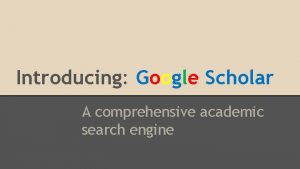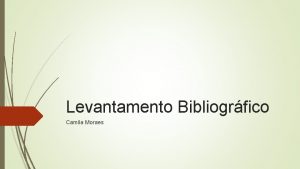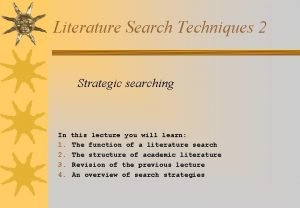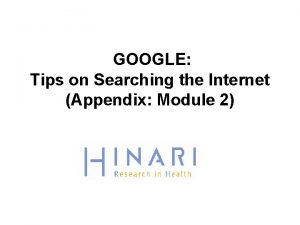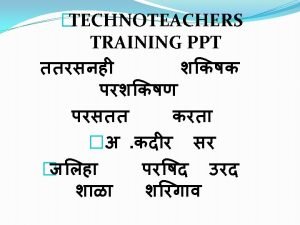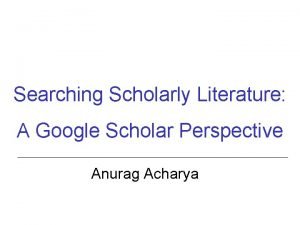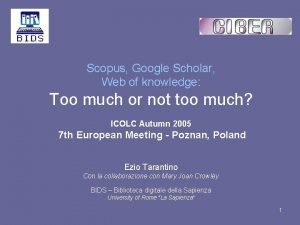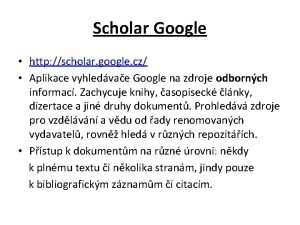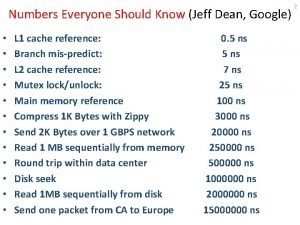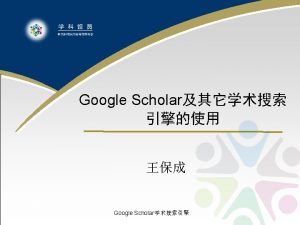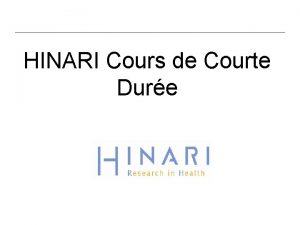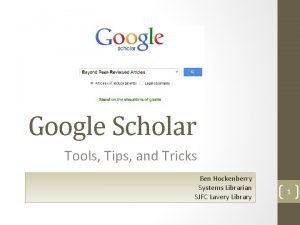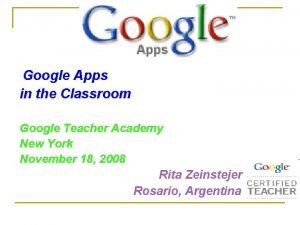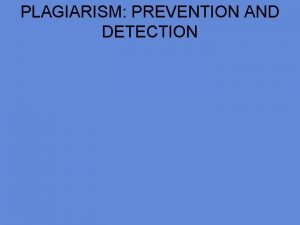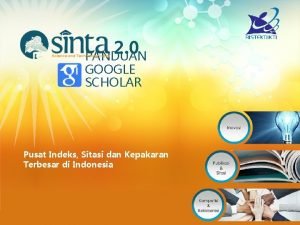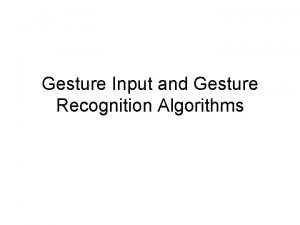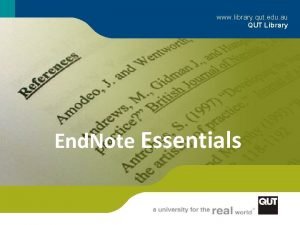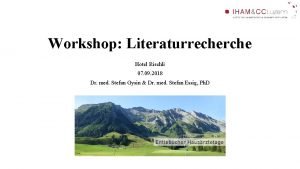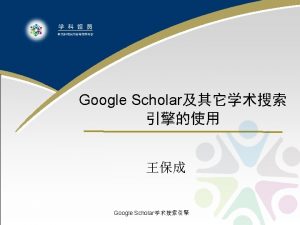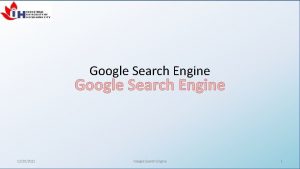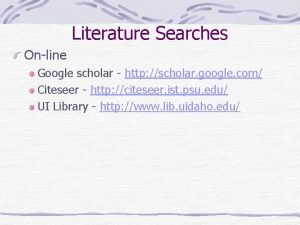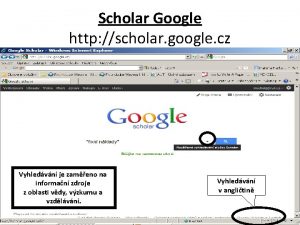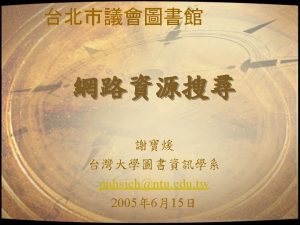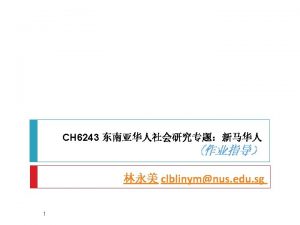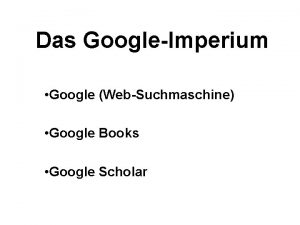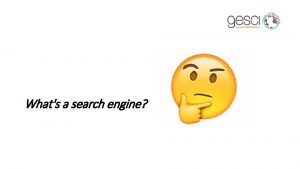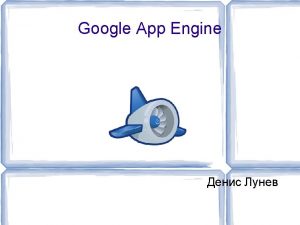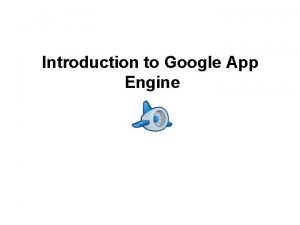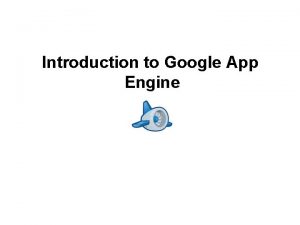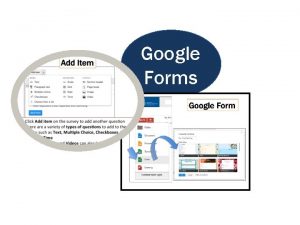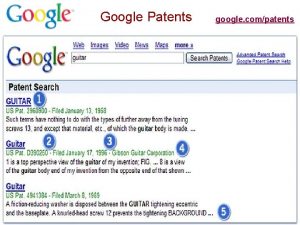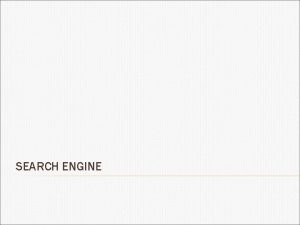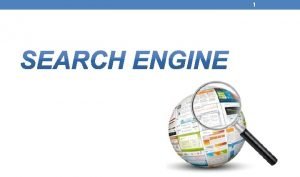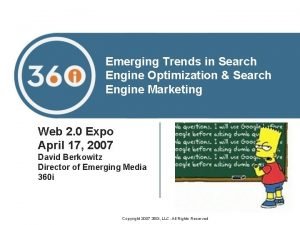Introducing Google Scholar A comprehensive academic search engine






























- Slides: 30

Introducing: Google Scholar A comprehensive academic search engine

Why Use Google Scholar? Google Scholar provides a convenient method for searching scholarly literature. From one website, you can search various disciplines and types of sources: articles, theses, books, abstracts and court opinions. Google Scholar helps you find relevant research quickly, from a wide variety of academic sources available online.

About Google Scholar Stand on the shoulders of giants Launched: November 20, 2004 Owner: Google Available at: scholar. google. com Goal: Allowing easier and more accurate access to scientific knowledge

Section 1: How to Search? Special thanks to Pearson Bramblett for slides of this chapter

To begin, proceed to scholar. google. com

Enter the search term into the text box

If you click the inverted triangle on the right side of the box, you can perform an advanced search.

The results are displayed just like a normal Google search

The search results not only indicate what type of source each result is. . .

. . . but results with a link on the right of the page. . .

. . . will access entire articles or books.

Click on a link to read an abstract of an article or see an excerpt from a book.

Tips for better searches: If the search results are too basic, click "Cited by" to see newer papers that referenced them. These newer papers will often be more specific. Click "Related articles" or "Cited by" to see closely related work, or search for author's name and see what else they have written.

Section 2: How to Build Personal Profile?

To begin, click on “My Citations” and then login to your Google account.

Step 1: fill the profile form

Step 2: add your article

Step 3: update option

Click on “Edit” button and fill the form.

Click on “Add” button to add your articles.

After adding your articles, Google Scholar will calculate your citations, H-Index and i 10 -Index

By clicking on article checkbox, you can “delete” it from your profile or “merge” similar articles or “export” them

By clicking on “More” button, you can view your trash, change update option and delete your account.

Section 3: Bibliometrics on Google Scholar

Google Scholar Indexes

Google Scholar Metrics Citations: Number of citation for all publication. i 10 -Index: the number of publications with at least 10 citations. H-Index: the largest number h such that at least h articles in that publication were cited at least h times each.

H-Index The largest number h such that at least h articles in that publication were cited at least h times each.

Publish or Perish is a software program that retrieves and analyzes academic citations. It uses Google Scholar and Microsoft Academic Search to obtain the raw citations, then analyzes these and presents the following metrics: • Total number of papers and total number of citations • Average citations per paper, citations per author, papers per author, and citations per year • Hirsch's h-index and related parameters • Egghe's g-index • The contemporary h-index • Three variations of individual h-indices • The average annual increase in the individual h-index • The age-weighted citation rate • An analysis of the number of authors per paper. Available at: http: //www. harzing. com/resources/publish-orperish

Scholarometerbeta is a social tool to facilitate citation analysis and help evaluate the impact of an author's publications. Available at: http: //scholarometer. indiana. edu

Thank you for your patience Any Question?
 Google scholar engine
Google scholar engine Google acadmico
Google acadmico Literature searching techniques
Literature searching techniques Scholar.google.com profile
Scholar.google.com profile Bielefeld academic search engine
Bielefeld academic search engine Foundstone sitedigger
Foundstone sitedigger Creat google forms
Creat google forms Google scholar
Google scholar Google scholar
Google scholar Google scholar cz
Google scholar cz Google scholar hinari
Google scholar hinari Jeff dean latency numbers
Jeff dean latency numbers Scholar google app
Scholar google app Dit
Dit Hinari login.research4life
Hinari login.research4life Google
Google Scholar.google.co.ukc
Scholar.google.co.ukc Google scholar
Google scholar Https://scholar.google.com.hk/?hl=zh-cn
Https://scholar.google.com.hk/?hl=zh-cn Scholar
Scholar Alternatives to turnitin.com
Alternatives to turnitin.com Google scholar
Google scholar Scholar
Scholar Scholar google
Scholar google Scholar google
Scholar google Youtube.com
Youtube.com Google scholar - research
Google scholar - research Pgoogle flights
Pgoogle flights Qut library hours
Qut library hours Hotel rischli
Hotel rischli Google scholar
Google scholar
